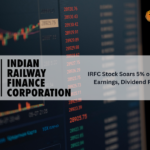When it comes to saving and investing your hard-earned money, it’s essential to make informed decisions. Two popular investment options in India, National Savings Certificates (NSC) and Tax Saving Fixed Deposits (FD), offer distinct benefits for individuals looking to grow their wealth while enjoying tax benefits. In this article, we’ll compare these two schemes to help you make an informed decision.
National Savings Certificates (NSC) Scheme:
NSCs are a popular government-backed savings instrument in India, offering guaranteed returns along with tax benefits. Here are the key features and benefits of the NSC Scheme:
- Interest Rate: The NSC currently offers a competitive interest rate that is set by the government and is subject to change periodically.
- Lock-in Period: NSCs have a fixed lock-in period of five years. This means that your money is invested for a minimum of five years, making it a relatively long-term commitment.
- Tax Benefits: Investments in NSCs are eligible for tax deductions under Section 80C of the Income Tax Act, making them an excellent choice for those looking to reduce their taxable income.
- Risk-Free: NSCs are backed by the Indian government, making them a safe and secure investment option.
- Interest Compounding: The interest is compounded annually, adding to your investment’s growth over time.
Tax Saving Fixed Deposit (FD):
Tax-saving fixed deposits are another popular choice for individuals seeking to invest while reducing their tax liability. Here’s what you need to know about Tax Saving FDs:
- Interest Rate: Tax-saving FDs offer competitive interest rates, typically higher than regular fixed deposits.
- Lock-in Period: Tax-saving FDs have a lock-in period of five years, similar to NSCs.
- Tax Benefits: Investments in tax-saving FDs are eligible for tax deductions under Section 80C, just like NSCs, making them a tax-efficient option.
- Premature Withdrawal: Tax-saving FDs typically do not allow premature withdrawal, ensuring that your money remains invested for the full five-year term.
- Risk Factor: While tax-saving FDs are considered safe, they are subject to market fluctuations and are not entirely risk-free like NSCs.
Choosing the Right Investment:
When deciding between NSCs and Tax Saving FDs, consider your financial goals, risk tolerance, and investment horizon. Here are some factors to help you decide:
- Risk Tolerance: If you prefer a risk-free option, NSCs might be more suitable due to the government’s backing. Tax-saving FDs carry some market risk.
- Liquidity: NSCs may offer slightly more liquidity as they allow premature withdrawal after the first year, albeit with a penalty. Tax-saving FDs often have stricter withdrawal restrictions.
- Interest Rate: Compare the prevailing interest rates of both NSCs and Tax Saving FDs to determine which offers a better return on investment.
- Tax Benefits: Both options offer the same tax deduction benefits, so this should not be the primary deciding factor.
In conclusion, both NSCs and Tax Saving FDs are viable investment options with their own set of benefits and limitations. It’s essential to carefully evaluate your financial situation and objectives before making a decision. Diversifying your portfolio by investing in a mix of fixed-income and equity-linked investments may also be a wise strategy. Consulting with a financial advisor can provide valuable insights and help you make an informed choice that aligns with your financial goals and risk tolerance.














